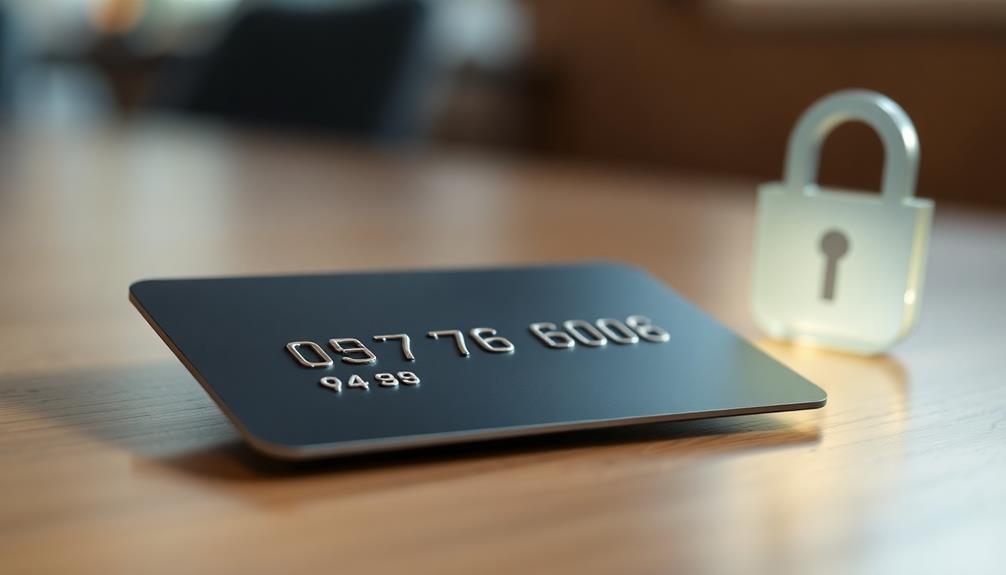To prevent fraud in card-not-present transactions, implement advanced security measures like digital fingerprinting to create unique device profiles and transaction analytics to spot anomalies such as unusual purchase patterns or high-risk locations. Use seamless integrations that analyze device reputation and purchase history in real time, triggering additional steps like two-factor authentication when needed. Developing a proactive strategy with continuous monitoring guarantees you stay ahead of evolving threats—discover more ways to secure your transactions below.
Key Takeaways
- Integrate digital fingerprinting and transaction analytics to identify suspicious activity in real-time.
- Establish customizable rules and thresholds aligned with your risk tolerance for proactive fraud detection.
- Utilize seamless platform integrations to enable automated background analysis without disrupting customer experience.
- Regularly review and update detection strategies based on emerging fraud patterns and regional insights.
- Educate staff on fraud prevention tools and incorporate multi-factor authentication for added transaction security.

When you process card-not-present transactions, you’re more vulnerable to fraud because the physical card isn’t involved, making it easier for criminals to use stolen information. To protect your business and customers, leveraging advanced fraud prevention tools is essential. One of the most effective techniques is digital fingerprinting, which creates a unique digital profile of each transaction based on device details, IP address, browser settings, and other variables. This fingerprint helps you identify suspicious activity by comparing new transactions against established profiles. If a transaction’s digital fingerprint deviates substantially from previous ones, it raises a red flag, prompting further investigation or additional verification steps.
In addition to digital fingerprinting, transaction analytics plays a critical role in spotting fraud patterns. By analyzing transaction data in real-time, you can detect anomalies such as unusual purchase amounts, high-frequency transactions from the same device, or activity from unfamiliar locations. These insights enable you to make immediate decisions—whether to approve, flag, or decline a transaction—reducing the risk of fraudulent charges slipping through. Transaction analytics also helps build a behavioral profile of your customers, so you can recognize normal activity and quickly spot deviations that might indicate fraud.
Implementing these technologies requires integrating them into your payment processing system. Many fraud prevention platforms offer seamless integration with existing payment gateways, allowing you to automate the analysis without disrupting the customer experience. For example, when a customer enters their payment details, digital fingerprinting runs in the background, generating a profile that the system compares against known fraud indicators. Simultaneously, transaction analytics evaluates the transaction’s context—such as device reputation and purchase history—helping you decide whether to proceed with the transaction or add extra verification steps like two-factor authentication.
It’s also essential to establish clear rules and thresholds based on your business’s specific risk tolerance and customer base. Regularly reviewing and updating these rules guarantees your fraud detection system remains effective against evolving threats. Educating your team about these tools and the importance of vigilant monitoring further enhances your defenses. Understanding regional differences in fraud risk can help tailor your prevention strategies more effectively.
Ultimately, combining digital fingerprinting with transaction analytics empowers you to proactively combat fraud in card-not-present transactions. These technologies not only help catch suspicious activity before it affects your business but also maintain a smooth checkout process for genuine customers. By staying vigilant and leveraging advanced analytics, you safeguard your reputation, reduce financial losses, and foster trust with your customers—all without sacrificing convenience.
Frequently Asked Questions
How Do I Choose the Best Fraud Prevention Tools?
You should choose fraud prevention tools that leverage machine learning and behavioral analytics to detect suspicious activity effectively. Look for solutions that adapt to evolving fraud patterns and provide real-time alerts. Prioritize platforms with strong data analytics capabilities and easy integration with your existing systems. By focusing on tools that analyze user behavior and utilize advanced algorithms, you can better prevent fraud and protect your transactions.
What Are Common Signs of Fraudulent Transactions?
You should watch for transaction anomalies, like unusually large orders or multiple rapid purchases, which often signal suspicious activity. About 70% of fraud cases show signs of irregular patterns or inconsistent billing info. If you notice transactions outside normal customer behavior, such as strange locations or new devices, it’s a strong indicator of potential fraud. Staying alert to these signs helps you catch and prevent fraudulent transactions early.
How Can I Educate Customers About Fraud Risks?
You can enhance customer awareness by providing clear fraud education through emails, website banners, and social media. Explain common fraud risks, such as phishing scams or suspicious transactions, and teach them how to spot red flags. Encourage them to use strong passwords, monitor their accounts regularly, and report any suspicious activity immediately. Regularly updating your fraud education efforts helps customers stay informed and better protected against evolving threats.
What Are the Legal Implications of Fraud Prevention?
Ignoring legal compliance and data privacy can turn your fraud prevention efforts into a legal nightmare. You must follow strict laws to avoid lawsuits, hefty fines, and reputational damage. When implementing fraud prevention, you’re responsible for protecting customer data and ensuring privacy standards are met. Failing to do so can lead to serious legal consequences, so stay informed about regulations and prioritize data security in all your fraud prevention strategies.
How Often Should I Update My Fraud Prevention Measures?
You should update your fraud prevention measures regularly, ideally every few months, to stay ahead of emerging threats. Incorporate transaction monitoring and fraud analytics to identify new patterns and vulnerabilities. Frequent updates guarantee your system adapts to evolving fraud tactics and maintains effectiveness. Stay proactive by reviewing your measures at least quarterly, and adjust as needed based on analytics insights and changing industry standards.
Conclusion
By implementing robust verification methods, staying vigilant against emerging threats, and continuously monitoring transactions, you strengthen your defenses. By educating your team, adopting new technologies, and refining your strategies, you create a resilient fraud prevention system. By embracing proactive measures, staying informed about industry trends, and fostering a culture of security, you protect your business, your customers, and your reputation. Ultimately, your commitment to prevention is the key to staying one step ahead of fraudsters.










